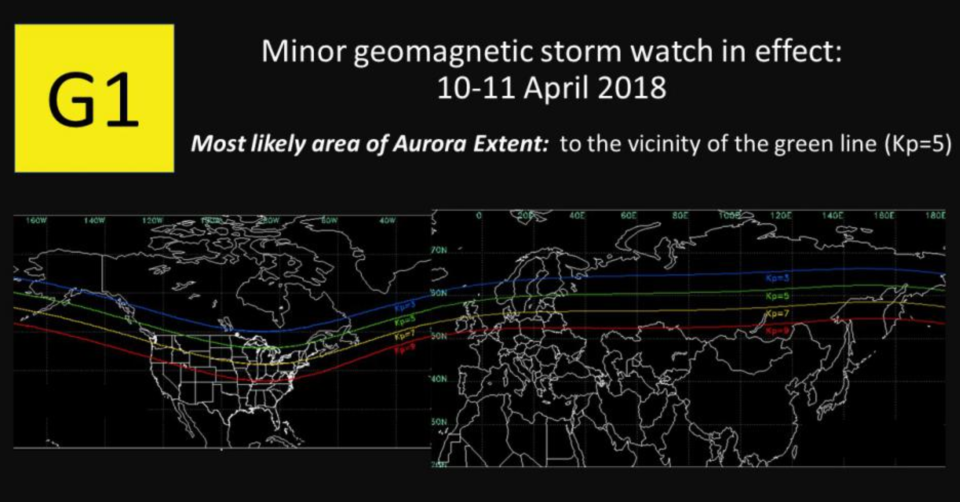Solar storm to blast Earth this week thanks to new ‘hole’ in the sun

A solar storm will hit Earth this week, thanks to a coronal hole in the surface of the sun – although it’s not worth heading to the doomsday bunkers quite yet.
Instead, people in northern latitudes might be able to see northern lights or aurora, as particles from the sun hit the Earth.
It won’t, however, ‘cause chaos’ as various tabloid news outlets have been claiming.
America’s Space Weather Prediction Center (SWPC) issued a G1 warning for a minor geomagnetic storm on April 10 and 11.
The SWPC said, ‘A G1 (Minor) geomagnetic storm watch has been issued for 10 and 11 April 2018 due to the arrival of a negative polarity coronal hole high speed stream.’

Coronal holes look alarming in the images captured by sun-watching spacecraft such as NASA’s sun-observing Solar Dynamics Observatory (SDO) satellite – but they’re perfectly safe, and normal.
MOST POPULAR TODAY ON YAHOO
Shocking CCTV of two ‘cowards’ carrying out fatal attack on man in Trafalgar Square
Neighbours of Richard Osborn-Brooks tear down ‘shrine’ to burglar Henry Vincent
Millions of ‘illegal’ Mersey Gateway Bridge toll charges could be refunded
‘Evil monster’ who murdered ex-girlfriend’s partner in a crowded travel agency jailed for 26 years
NASA says, ‘Coronal holes are low-density regions of the sun’s atmosphere, known as the corona. Because they contain little solar material, they have lower temperatures and thus appear much darker than their surroundings.
‘Coronal holes are visible in certain types of extreme ultraviolet light, which is typically invisible to our eyes, but is colorized here in purple for easy viewing.
‘Coronal holes are the source of a high-speed wind of solar particles that streams off the sun some three times faster than the slower wind elsewhere.’

 Yahoo News
Yahoo News 
